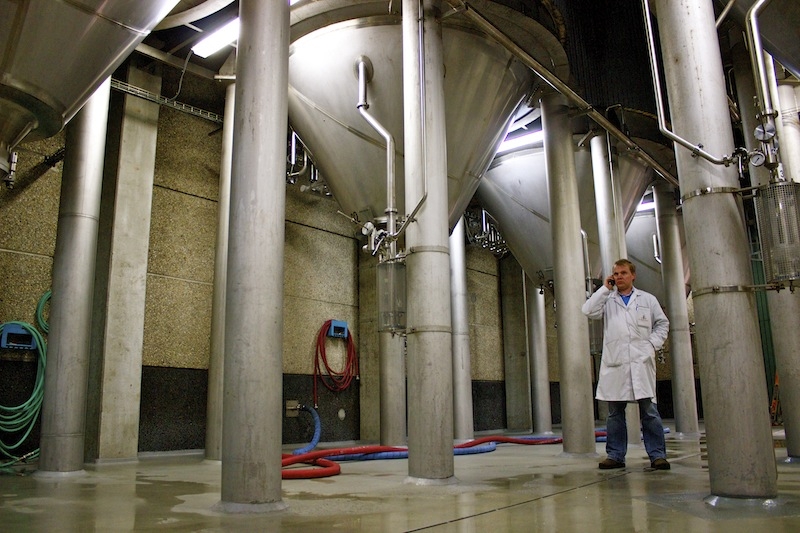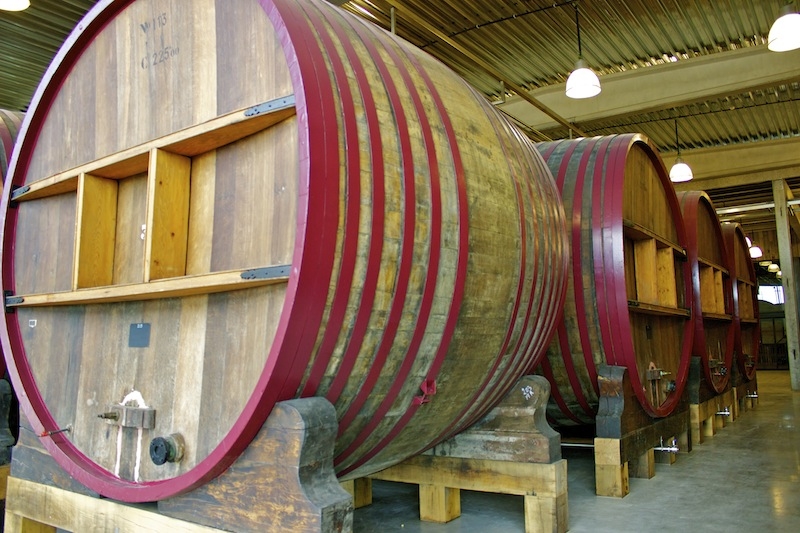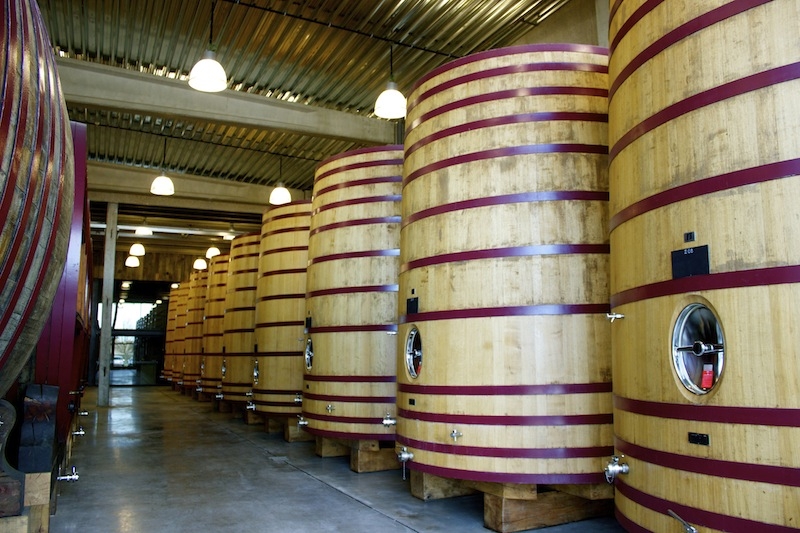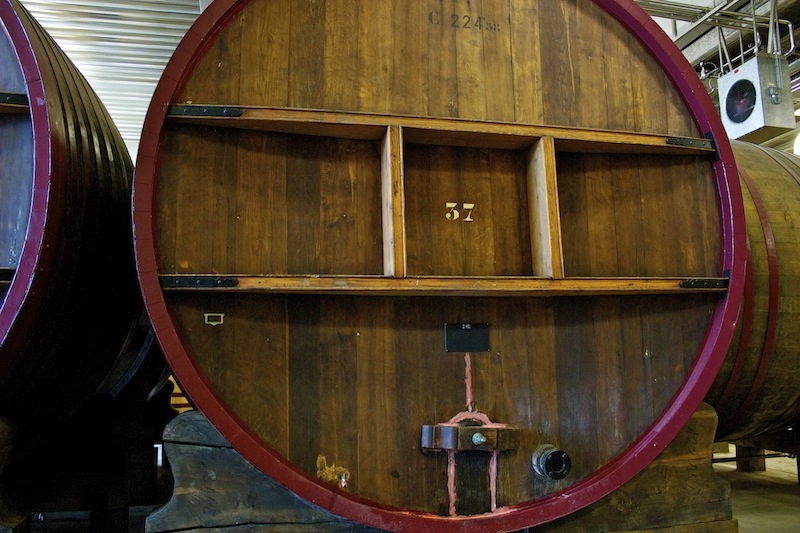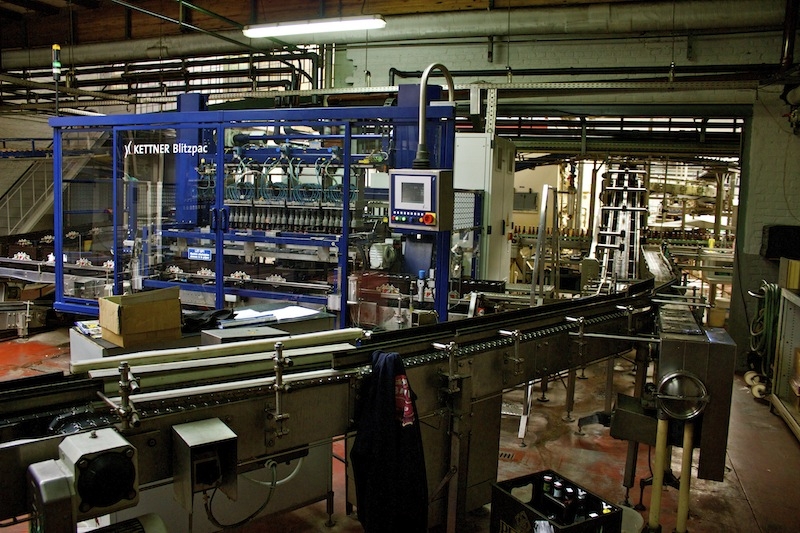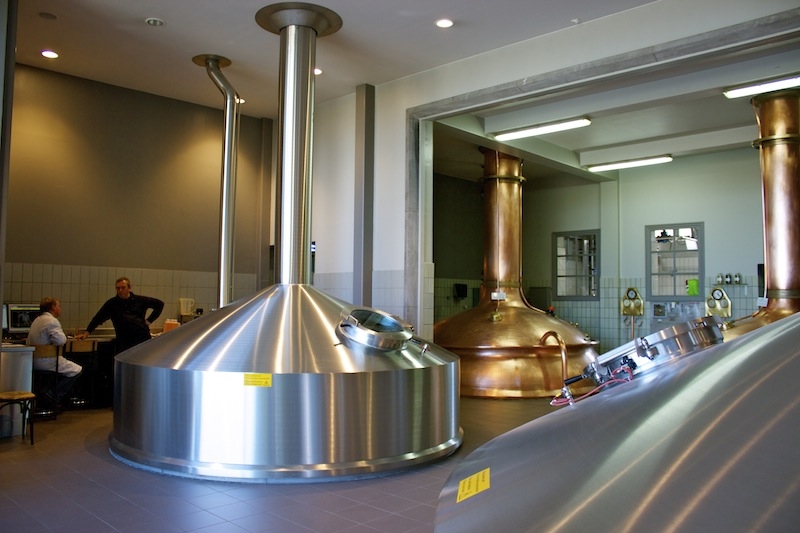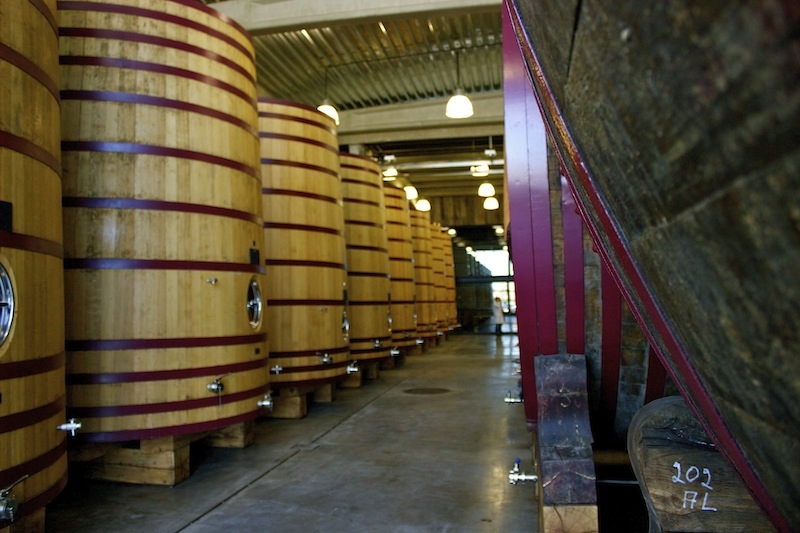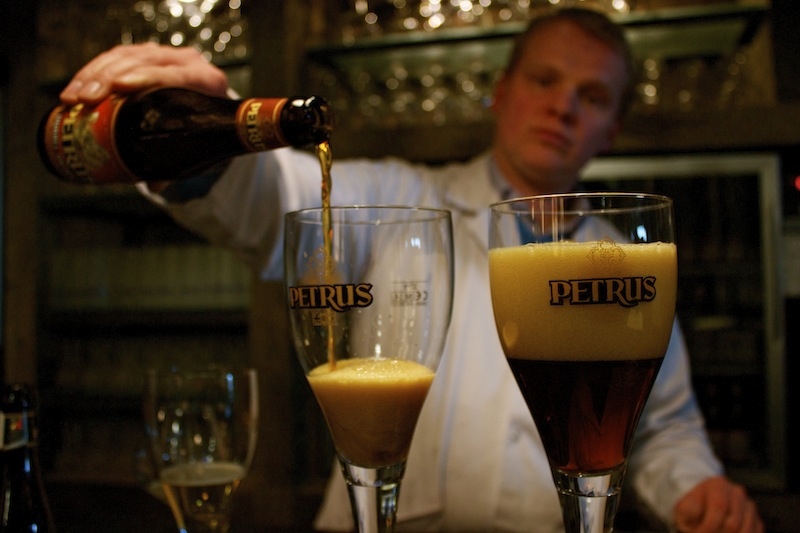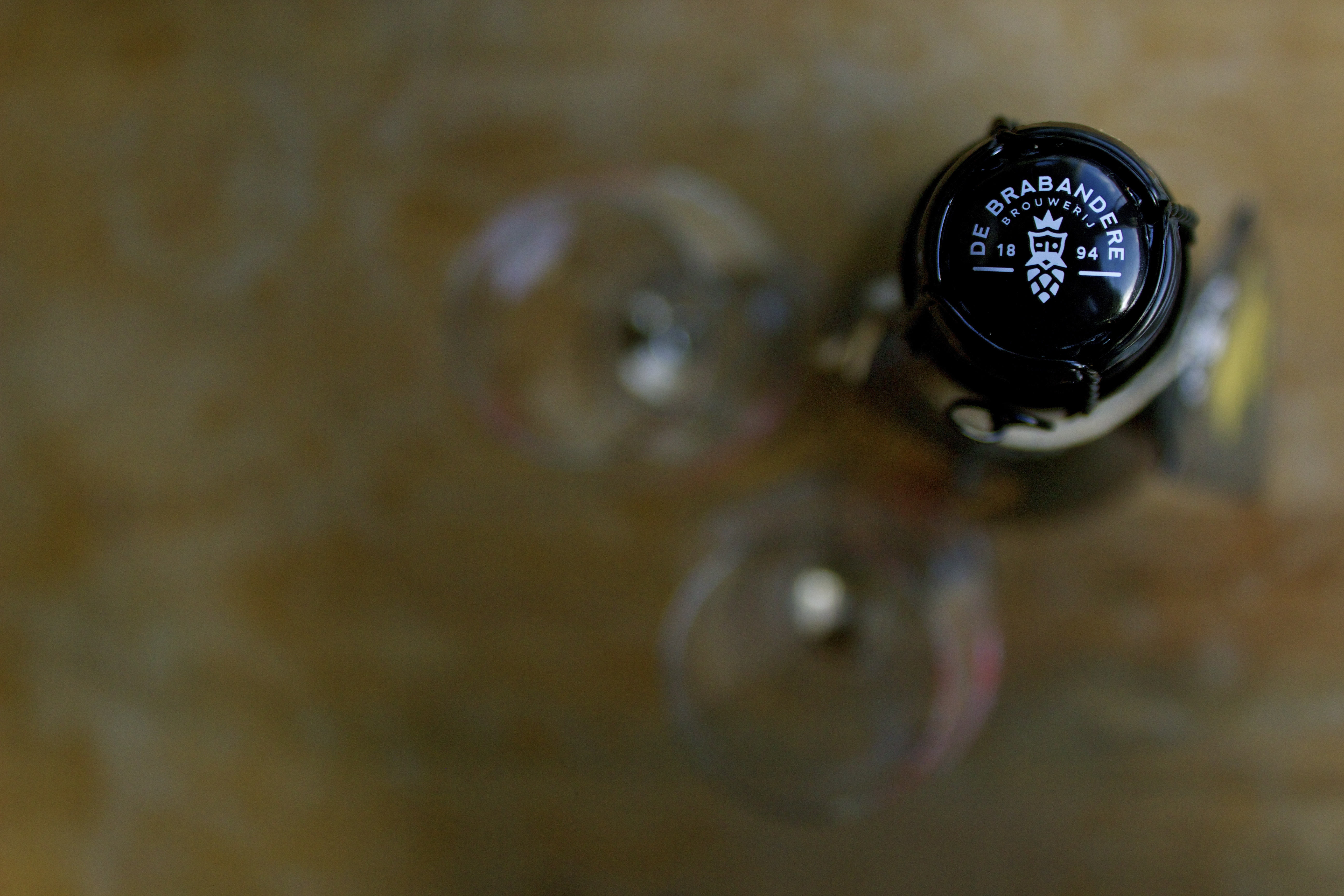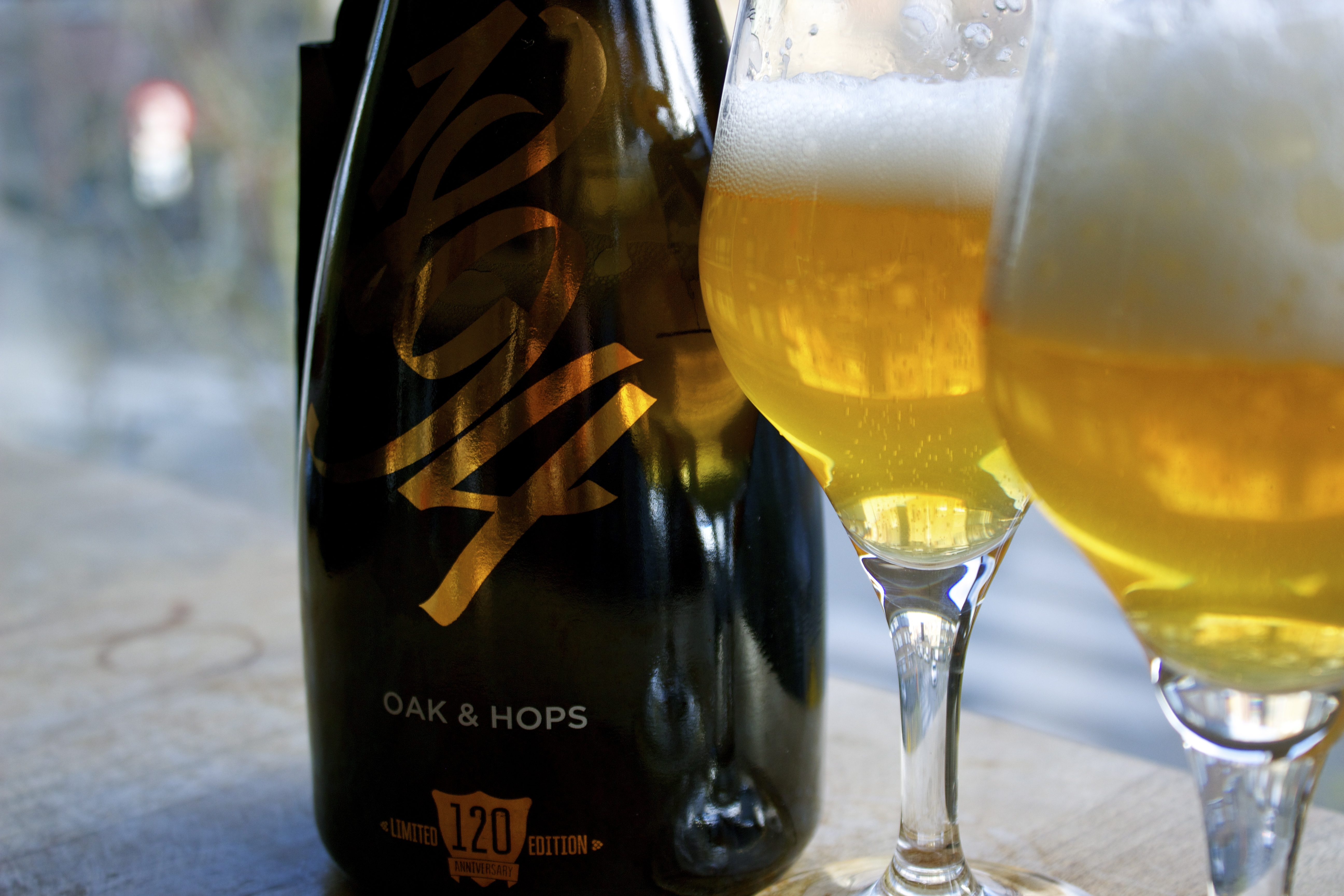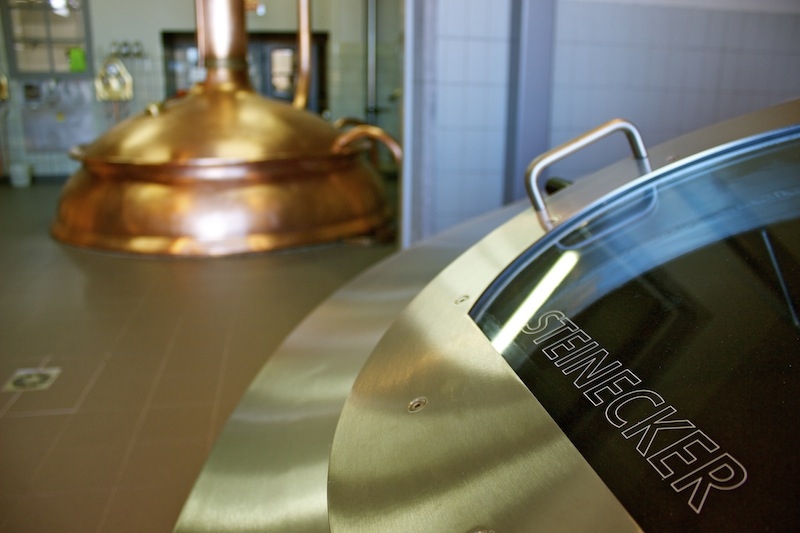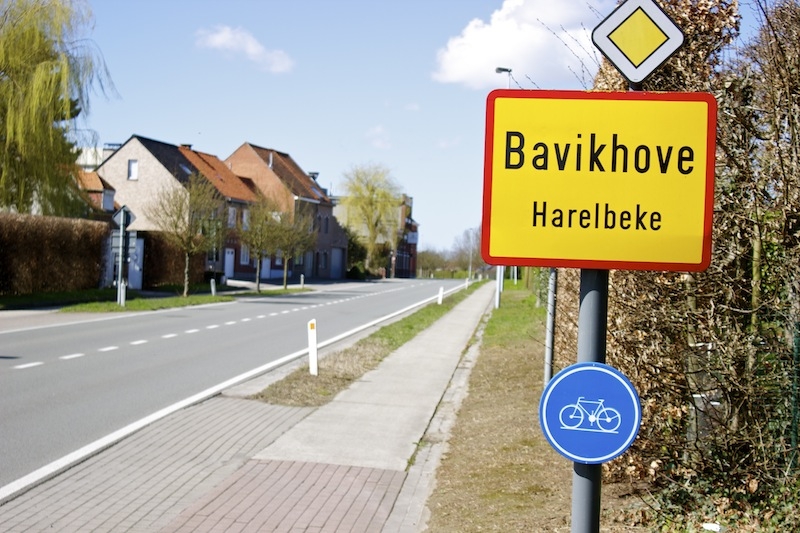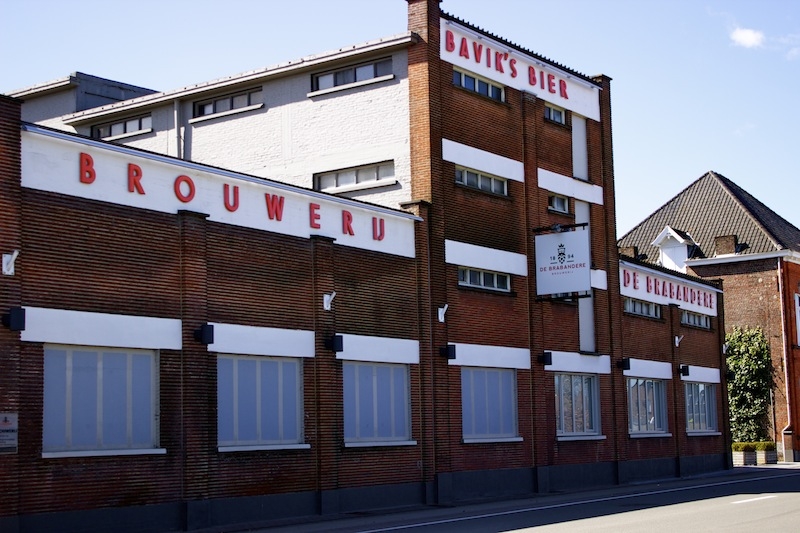It’s hard not to mention Michael Jackson when you write about Belgian beer.
The ‘Beer Hunter’ passed away 8 years ago but sometimes it feels like beer writers are constantly trying to imitate his style rather than offer fresh perspectives and new voices. It’s time to move on, surely?
On a recent visit to Brouwerij De Brabandere however, my conversation with Master Brewer, Yves Benoit, was dominated by the visits of Michael Jackson almost 20 years ago.
“He used words that every beer geek uses now,” Yves says of Jackson. “He had a range of vocabulary to describe beer that didn’t exist at the time.”
THE VISITS OF JACKSON
Yves was 24 years old when Jackson first visited and current owner, Ignace De Brabandere was showing him around the brewery. “I remember Mr. Jackson asked my boss whether he could try the base beer for our Oud Bruin,” Yves recalls. “He wanted to try the beer straight from our foeders. Ignace reluctantly agreed and I was asked to go and fetch some.” Current brewery manager and Ignace’s son, Albert De Brabandere was also there that day. “He was only a teenager then,” says Yves.
One of the unique things about De Brabandere’s base beer for their Oud Bruin – unlike others producing this old style of beer – is that it is blonde. The base beer for Oud Bruins among most other breweries in the region is red-brown or brown.
Jackson thought the beer was “fantastic”, but it’s not his reaction to the beer that is remarkable. It’s how much of an impact his visit continues to have on the now Master Brewer at De Brabandere. “Listening to him communicate about beer was an incredible experience,” says Yves. “He was so dry in the way he talked. But when he tasted a beer and described what he experienced, you listened.”
Yves remembers Jackson asking the brewery to look after their older foeders. “He’d probably seen them in whiskey distilleries and other breweries and knew they produced better beers,” says Yves. “We discovered soon after that visit that he was right. He asked us to promise to him that we would look after them.”
On Jackson’s second visit, he asked to try beer from the foeders another time. Ignace was reluctant again. This was an expensive beer to make, aging for two and a half years in oak foeders – and in Ignace’s mind – much too sour to put on the market. Jackson tried the beer a second time and again loved it.
Yves describes Jackson’s third visit to the brewery. “He tasted the beer straight from the foeder again and asked whether he could take some for his beer clubs in England and America”, Yves says. “My boss immediately refused.”
Being persistent, Jackson called a few days later to ask another time. Ignace reluctantly agreed that Jackson could take the beer only if he bought 75 hectolitres in one batch. “My boss never thought that he would say yes to that,” laughs Yves. “75 hectolitres is a lot of this type of beer.” Jackson didn’t hesitate. “He asked my boss over the phone that day where he should sign.”
PETRUS AGED PALE
There was a second condition on Jackson’s purchase of the beer from the brewery on that occasion. “Ignace told Michael Jackson that he would be responsible for naming the beer”, says Yves. “Mr. Jackson named it then and there over the phone. He named it as it is. It’s aged. And it’s pale.”
Because up until that point Petrus Aged Pale wasn’t actually a beer for market, the brewery had to have labels printed quickly. In the rush of copy and paste, they accidentally printed the wrong alcohol content on the labels. “The labels said it was a 5.5% ABV when Petrus Aged Pale is actually a 7.3% ABV beer”, Yves says. They only noticed this once every single label was on the bottles. “We had to print a second batch of labels with the correct ABV and stick them over the other labels.”
Once word got out that this rare and very unique beer was being sent to Jackson’s beer clubs in England and America, the beer consumers group in Belgium – then the Objectieve Bierproevers and now called Zythos – wanted in on the action. “They weren’t happy that this very special beer was being sent to other countries and was not available in Belgium”, Yves says.
People tasted the beer and that was that. It came on the market in 2001 and continues to be a sought-after and highly regarded beer 14 years later.
THE PETRUS SOURS RANGE
The brewery may be very old, but the equipment is all brand new and there’s an almost obsessive pre-occupation with hygiene and sterilisation, noticeable in each new room we enter. “Maybe we’re a bit paranoid here about bacteria”, Yves says. “But we have to be. We’re sleeping with someone who everyday has the flu.”
He’s referring to the wild bacteria in their foederzaal, a hall with 27 huge oak barrels, 220 hectolitres a piece, where the beer that will become the Petrus Aged Pale is attacked by wild yeasts and bacteria over a maturation period of two and a half years. “That’s a beer that we do want to be infected”, Yves says.
The increase in demand for the Petrus Sours – Aged Pale, the Oud Bruin, the Aged Red and the 50/50 – led to a period of investment in 2014 during which De Brabandere expanded and redecorated their foederzaal including the purchase of 6 new foeders, each of which is hand-crafted by coopers from the Foudrerie Francois in Brive-la-Gallairde, France.
The Petrus Sours range is an extension of their traditional Petrus range of beers which includes a blonde ale, a dubbel, a tripel and a special. “Petrus is the name given to Saint Peter in the Flemish bible”, Yves says. At the time the Petrus range of beers was launched in the 1980s, it was common practice to capitalise on the brand equity created by the Trappist breweries by sticking an abbey or a religious figure on your bottle. De Brabandere followed suit.
The brewery owner, Ignace De Brabandere is a lover of wine as well as beer and the name of the brand has its roots in the vineyards of neighbouring France. “There’s a famous wine called Chateau Petrus which my boss really likes”, says Yves, leading me into the tasting room.
THE MOST VERSATILE BEER IN BAVIKHOVE
Immediately noticeable from the bottles in the fridge and the marketing material on the wall is just how many beers utilise the qualities of the Petrus Aged Pale in their make-up.
The Petrus Aged Red is a blend of 15% Petrus Aged Pale and 85% Petrus Dubbel Bruin to which they add real cherry juice. Their famous Petrus Oud Bruin is a blend of 33% Petrus Aged Pale and 67% young top-fermented brown beer. Recently, they’ve developed a Petrus 50/50, an equal blend of Petrus Aged Pale and Aged Red which is now a limited edition. They even encourage you to take your own glass and to blend the beers in the proportions you think you will enjoy most.
It’s not only the Petrus range of beers that get the Aged Pale treatment. Last year for the 120th anniversary of the brewery, they created a blonde bitter beer called 1894 Oak & Hops which Yves tells me is blended with 20% of Petrus Aged Pale. “We thought that maybe we had invented the first Sour IPA,” Yves says. “But we found some craft brewers in America who had already tried that out. It’s certainly the first Sour IPA in Belgium.”
SOME THINGS NEVER CHANGE
There’s been a lot of change at the brewery since Petrus Aged Pale was launched as a commercial product. In the last few years, they’ve completely revamped their brewhouse so that it is now a modern and automatic operation with a maximum batch production capacity of 200 hectolitres. Last year they celebrated their anniversary by changing the name of the brewery from Brouwerij Bavik back to the family name – Brouwerij De Brabandere.
But some things don’t change. They’ve maintained their own strains of yeast for years, propagating one for main fermentation and a different one for bottle conditioning. “We want a different yeast for refermentation in the bottle which flocculates and stays in the solution when active, but which drops out when inactive,” says Yves. “With the dust yeasts you can’t choose for the vitamins, bitterness or cloudiness in your beer. With ours, you can choose.”
Another thing that hasn’t changed is their presence in the local area. Almost every pub in this part of West Flanders is shared between the neighbouring Omer Vander Ghinste brewery (who also changed their name last year from Bockor) and Brouwerij De Brabandere. “Within a range of 30 kilometres of the brewery, we own between 300 and 400 pubs,” Yves says. “That’s the way it works in Belgium.”
MOVING ON
At the end of the tasting, Yves and I are still talking about the Petrus Aged Pale and about Michael Jackson. “Another thing that’s unusual about the beer is its colour,” Yves says. “It is usually red or brown beer coming from foeders in the other breweries producing this style. Michael Jackson understood that we were a brewery that traditionally produced blonde beers. He could see why we were doing what we were doing and he predicted that this beer would work commercially.”
Perhaps there is still too much deference to Michael Jackson among beer writers. Maybe we should just move on. But it’s difficult to do that. Even Master Brewers in West Flanders find it hard. Especially when he’s responsible for getting the Petrus Aged Pale on the market.



